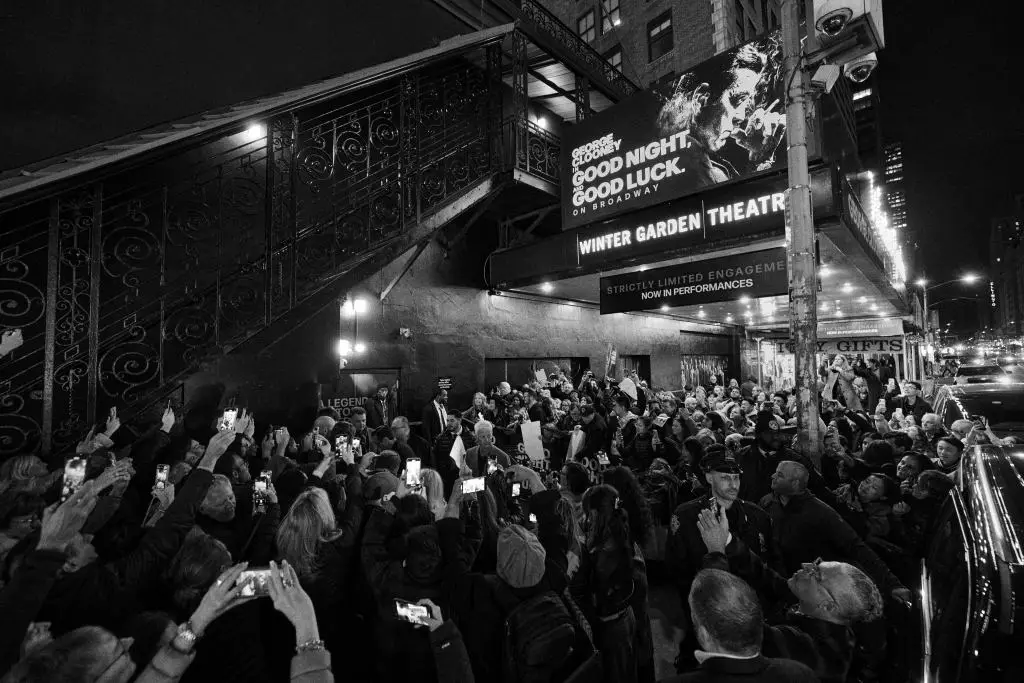Broadway never fails to captivate audiences, and this spring season marks a seismic shift in ticket sales as big productions herald a potential renaissance for the Great White Way. Just as the lights of Times Square glimmer brighter with each passing week, the curtain is rising on returns that not only elevate box office numbers but also entice spectators to part with their hard-earned cash. This article delves into the latest developments, spotlighting the impressive financial performances of numerous productions and examining the implications for the industry.
Star Power Driving Box Office Bonanza
The undeniable allure of star-studded casts is a key driver of Broadway’s financial resurgence. Fresh from its previews, “Good Night, And Good Luck,” led by the incomparable George Clooney, has swiftly entered the coveted $2 Million Club, garnering $2 million within just five preview performances. This swift financial leap mirrors the trajectory of “Othello,” which features heavyweights Denzel Washington and Jake Gyllenhaal. The power of star talent greatly influences ticket pricing, and as the audience demographic shifts, these prices soar, further enriching theater companies while potentially alienating less affluent theatergoers.
In a similar vein, “Glengarry Glen Ross,” featuring prominent names like Kieran Culkin and Bill Burr, achieved a staggering $1,907,467 in just seven preview performances. The buzz surrounding its impending opening night on March 31 is palpable, suggesting that the full eight-show schedule will only amplify these already impressive figures. Audiences crave the chance to witness their favorite stars on stage, and this phenomenon is propelling box office ticket prices to new heights.
The Financial Pulse of New Productions
Not every production can boast a leading box office draw, yet many are still finding their footing financially. “The Picture of Dorian Gray,” headlined by Sarah Snook, raked in $848,904 in its initial six previews, asserting its position at the Music Box Theatre. The balance between established talent and new narratives speaks to a larger trend where audiences are willing to experiment, yet audiences also gravitate towards productions with recognizable names.
Additionally, the previewed musical “Smash,” inspired by the cult favorite television series, is not to be overlooked, having achieved a noteworthy $715,631 during its early run, despite its more modest star power. Productions like these, including “Buena Vista Social Club” and the London import “Operation Mincemeat,” illustrate that market depth isn’t solely dependent on household names but also on creativity and audience engagement.
Ticket Pricing and Audience Implications
As impressive as these revenue numbers are, they bring forth questions about ticket accessibility. With the average ticket price soaring to $134.96 across 31 shows, the discussion surrounding affordability becomes louder. High-demand productions such as “Othello” demonstrate this problem abundantly, averaging $338.83 per ticket, while premium seating prices have soared even higher, reaching almost $900. This escalation may cultivate a worrying trend: a Broadway that caters increasingly to wealthier audiences, potentially diminishing diversity in attendance.
While record-breaking ticket prices can indicate a healthy market, they risk alienating a broader base of theatergoers who cannot afford such luxuries. As Broadway pushes forth with its spring offerings, maintaining balance is essential. The remarkable performance of shows like “Glengarry” suggests capacity crowds and enthusiastic ticket sales, yet sustaining this momentum while inviting diverse audiences remains crucial for the health of the industry.
The Bigger Picture for Broadway’s Future
Currently, Broadway celebrates a flourishing season, with a total gross of $1,445,063,624, reflecting an 18% increase compared to the previous year. The increased attendance—11,347,483 this season—demonstrates a robust appetite for live theater post-pandemic. However, this vibrant landscape demands constant vigilance to sustain growth and inclusivity.
As ticket prices skyrocket and the marketplace becomes more luxurious, producers must contemplate sustainability in audience engagement. Expanding outreach, creating affordable options, and ensuring that diverse voices have a stage are vital steps in fostering an environment where Broadway can thrive without becoming elitist.
To navigate this complex terrain, it is essential for producers, theater owners, and artists alike to remain attuned to audience dynamics amid the ebb and flow of public interest. Broadway stands at a pivotal juncture—one where both innovation and tradition must coexist for the future of the theatrical landscape.

